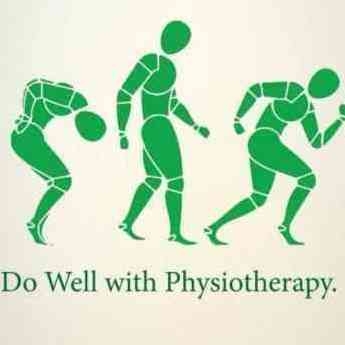+918042754929

This is your website preview.
Currently it only shows your basic business info. Start adding relevant business details such as description, images and products or services to gain your customers attention by using Boost 360 android app / iOS App / web portal.
🗨👨⚕️👉THORACIC OUTLET SYNDROME💁♂️✍ If you have n...
🗨👨⚕️👉THORACIC OUTLET SYNDROME💁♂️✍ If you have numbness and tingling in your arms or pain in your shoulders, especially when you raise your arms, you could have thoracic outlet syndrome (TOS). The thoracic outlet is the narrow space between your collarbone and top rib. Muscles run through it from your neck to your shoulders along with the nerves and blood vessels that go down your arm. When something presses on them, you can have pain and other symptoms. 🙋♂️💬There are 3 types of thoracic outlet syndrome: Neurogenic: Affects nerves leading from the spinal cord to the neck to the arm. Most thoracic outlet syndrome cases involve nerves. Venous: Affects veins Arterial: Affects arteries 🙋♂️💬SYMPTOMS? You’re most likely to feel them in your arms and hands. They include: Pain in the neck, shoulder, or arm Numbness and tingling Swelling Weakness Discoloration -- blue, red, or pale Cold hands 🙋♂️💬CAUSES? 🌀Injuries: Whiplash, a broken collarbone, or other injury can leave scar tissue and inflammation. 🌀Poor posture: When your shoulders slump, your collarbones can move out of place and press on your nerves. 🌀Weak shoulder muscles can cause bad posture. 🌀Repetitive stress: It can affect people who move their arms in a certain way, like swimmers, volleyball players, and baseball pitchers. 🌀Physical defects: Some people are born with an extra rib or a thoracic outlet that’s smaller than normal. 🌀Obesity: Extra weight can put stress on the muscles that support your collarbones. 🙋♂️💬SPECIAL TESTS⚠️⚠️⚠️ ✍Elevated Arm Stress/ Roos test: the patient has arms at 90° abduction and the therapist puts downwards pressure on the scapula as the patient opens and closes the fingers. If the TOS symptoms are reproduced within 90 seconds, the test is positive. ✍Adson's: the patient is asked to rotate the head and elevate the chin toward the affected side. If the radial pulse on the side is absent or decreased then the test is positive, showing the vascular component of the neurovascular bundle is compressed by the scalene muscle or cervical rib. ✍Wright's: the patient’s arm is hyper abducted. If there is a decrease or absence of a pulse on one side then the test is positive, showing the axillary artery is compressed by the pectoralis minor muscle or coracoid process due to stretching of the neurovascular bundle. ✍Cyriax Release: the patient is seated or standing. The examiner stands behind patient and grasps under the forearms, holding the elbows at 80 degrees of flexion with the forearms and wrists in neutral. The examiner leans the patient’s trunk posteriorly and passively elevated the shoulder girdle. This position is held for up to 3 minutes. The test is positive when paresthesia and/or numbness (release phenomenon) occurs, including reproduction of symptoms. ✍Supraclavicular Pressure: the patient is seated with the arms at the side. The examiner places his fingers on the upper trapezius and thumb on the anterior scalene muscle near the first rib. Then the examiner squeezes the fingers and thumb together for 30 seconds. If there is a reproduction of pain or paresthesia the test is positive, this addresses compromise to brachial plexus through scalene triangles. ✍Costoclavicular Maneuver: this test may be used for both neurological and vascular compromise. The patient brings his shoulders posteriorly and hyperflexes his chin. A decrease in symptoms means that the test is positive and that he neurogenic component of the neurovascular bundle is compressed. . . . . #physiotherapy #physicaltherapy #physio #pain #management #treatment #symptoms #causes #children #shoulderpain #disease #disorder #doctor #doctors #dpt #hospital #lahore #painfree #injury #injuries #sports #anatomy #care #medicine #physical #onlinedoctor

